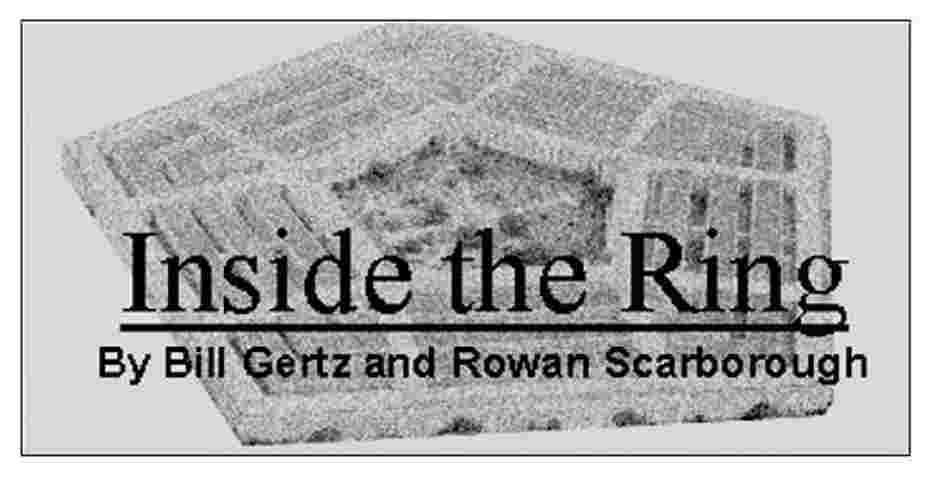|
Return to
|

|
July 11, 2003
Notes from the Pentagon
Baghdad report
The report, labeled "secret," states that while the technician was making repairs on the hospital's refrigeration unit, he was told that the Iraqis were holding the three Americans' bodies in the morgue and was shown their identification cards.
The bodies were covered in dried blood and had grayish uniforms with U.S. Air Force insignia. The source also said he had seen the bodies of a Saudi soldier and a British soldier at the morgue.
It could not be learned what action was taken to pursue the technician's claims.
But the report, sent from the Defense Attache Office in Amman, Jordan, is the kind of intelligence information that a special team now in Iraq is pursuing to resolve the case of a missing Navy pilot, Capt. Michael Scott Speicher. He was lost when his F-18 was shot down in January 1991 near Baghdad.
So far, Capt. Speicher's fate has not been determined, although new evidence was uncovered in Iraq in the form of the initials "MSS" carved into a prison wall.
New carrier forward
Currently, the 12 U.S. carrier battle groups are split evenly between the Pacific and Atlantic oceans. But with the growing threat from communist China and the nuclear crisis still unresolved in North Korea, planners are looking at moving a carrier group to either Hawaii or Guam. Aircraft carriers have not been based in Hawaii since World War II.
"Certainly with Iraq gone as a threat now and constant need for a carrier presence in the Persian Gulf, it would make sense to shift forces toward the Pacific," a defense official told us.
Adm. Robert Natter, head of the Fleet Forces Command, is conducting a review of Navy deployments worldwide as part of a major Pentagon review. Adm. Natter said in a speech last May that the threats from Asia call for "a shift in resources to the Pacific from the Atlantic."
Recently, two U.S. attack submarines were moved to new homeports at Guam and a third submarine is expected soon. Eventually four attack submarines will be based there to deal with hot spots ranging from Indonesia to the Taiwan Strait.
The Air Force also has moved B-1 and B-52 bombers to Guam and the service also has stockpiled air-launched cruise missiles there, a move that drew protests from the Chinese government.
China is expected to complain loudly about any carrier deployment to Hawaii or Guam. Beijing views the U.S. military as its main foe in the future and is developing missile capabilities designed to sink U.S. carriers and warships.
Currently, three carriers are based in San Diego and two are in Washington state. A sixth is based in Yokuska, Japan.
Plodding along
A women's group is circulating several letters to members asking them to oppose Mr. Roche's nomination. In addition, the nominee is likely to receive rough treatment from some Senate Armed Services Committee members. Some don't like the tanker lease deal negotiated with Boeing Co. Others do not like his handling of the sex scandal at the Air Force Academy.
"Has the nomination gone forward? Yes," said an administration official. "Am I sure he's going to make it? No. You never know how these things play until the hearings."
Defense Secretary Donald H. Rumsfeld is doing some personnel fine-tuning at his two-plus-years point. Believing the Army was slow to reform, Mr. Rumsfeld fired Army Secretary Thomas White in April. He also replaced the retiring Army chief of staff with an unconventional choice: retired Army Gen. Peter Schoomaker, who spent most of his career as a commando.
Iraqi brief
He told officers that Operation Iraq Freedom was marked by three joint warfighting improvements: improved lethality, improved intelligence and improved command and control.
The lethality, he said, allowed the military to target the regime, and "not annihilation of enemy army." Precision strikes allowed a buildup of "fewer but more effective forces."
Rug rats
Soldiers started coming down with skin diseases shortly after moving into the airport, which contained its own palace for Saddam Hussein and Ba'ath Party rulers.
Doctors traced the skin lesions to bugs buried deep inside the carpet fabric, so soldiers began burning hundreds of the rugs to rid the division of the infestation.
One officer described the rugs as the best Esfanhans, Qums and Nain carpets that can be bought, some as large as 30 feet by 60 feet. The office said the carpets may have been worth hundreds of thousands of dollars.
|
|
Inside the Ring Archives
1999 Columns 2000 Columns 2001 Columns 2002 Columns 2003 Columns |